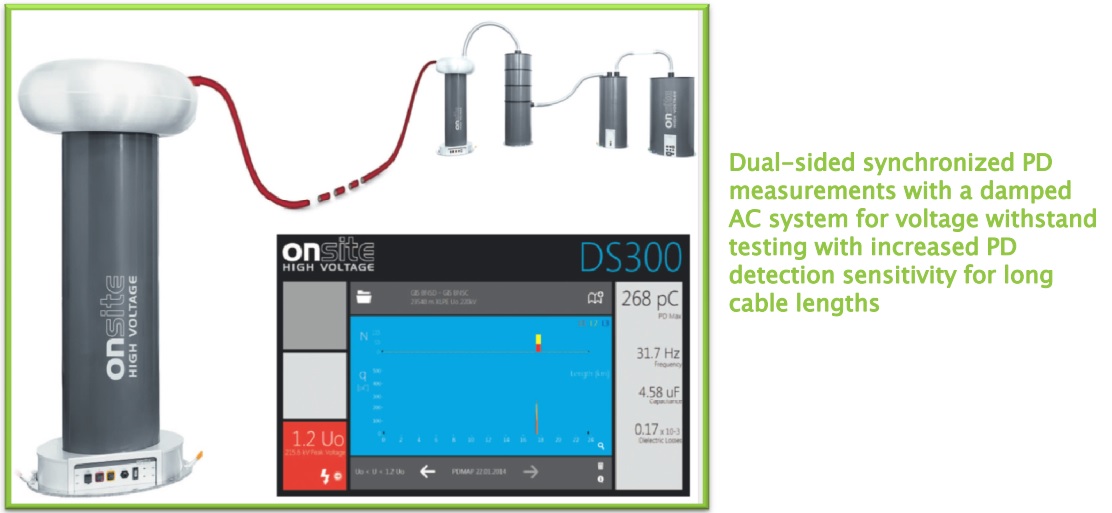Factory Acceptance and After-laying Testing of Long-lengths Submarine Transmission Power Cables

Typical characteristics of long submarine power cable circuits:
-
High cable capacitance which requires extremely large power demand for conventional AC test systems
-
As maintenance testing during service operation is extremely difficult there is high demand on factory and after-laying testing of a complete cable section
-
In the factory a large number of factory joints are installed
-
There is a need to test the complete cable in the factory before shipping and after on-site installation
-
No possibility for distributed partial discharge measurements on individual joints of a subsea cable, onshore as well offshore
-
Regarding complete cable length any possible defects as introduced in the factory or after the installation and transportation can only be detected and located with Damped AC voltage testing including single- or dual-side partial discharge detection at the cable termination
-
Accessibility and space constraints regarding offshore access to the cable
Factory acceptance and after-laying testing:
-
During the production and installation of long lengths of submarine power cables, there is a need for quality control of the cable by means of electrical tests. One of these tests is a high voltage test which can be monitored by partial discharge measurements. In this way the quality of the complete cable system (cable and accessories) can be monitored
-
During the factory acceptance test a fingerprint of the cable is obtained, which can be compared with the finger-print of the after-laying test
Testing of long lengths of power cables:
-
Damped AC technology makes it possible to energize very long lengths of power cables with a high capacitance, due to its low input power demand
-
Applicable for all types AC and HVDC of MV, HV and EHV power cables
-
Applicable for factory acceptance testing and on-site after-laying/commissioning,
maintenance and diagnostic testing
-
Approved testing methodology, in accordance with relevant international standards and
recommendations (IEEE, IEC, CIGRE)
-
DAC technology meets the specification of an on-site testing system:
- Lightweight modular system
- Compactness in relation to the output voltage
- Minimal system footprint
- Low effort for system assembly
- Low power demand, even for long cable lengths
- Low level background noises and possibility of sensitive PD detection
- Possibility of simultaneous dual-sided PD measurements
Partial discharge testing on long lengths of power cables:
-
An approved method used to localize the origin of PD in a complete cable section is time domain reflectometry (TDR). Using this technique, a detectable reflection of the PD pulse from the far end of the cable has to be detected by the single-side measurement device, this method is used for cables with a length up to approximately 15 km
-
The PD measurement sensitivity and localization accuracy can be improved by using an additional PD measuring system at the second (far) end of the cable. This unit measures PD activity with the conventional standardized PD detection synchronized with the PD measurement at the near end of the cable. This dual-sided measurement provides higher detection sensitivity, and is used for cables with a length up to approximately 30 km
